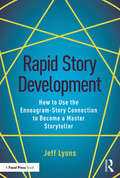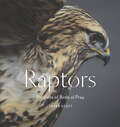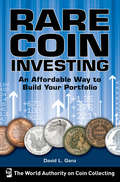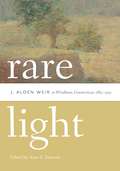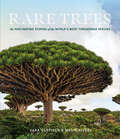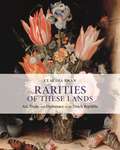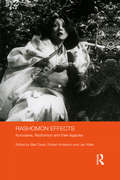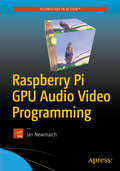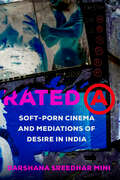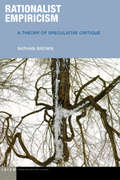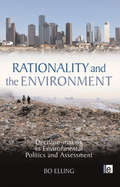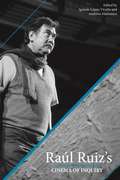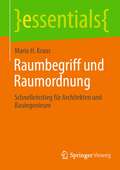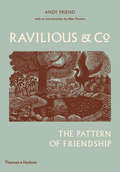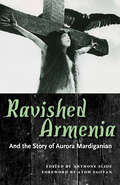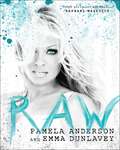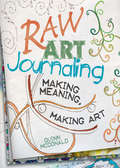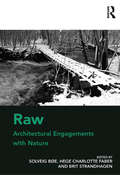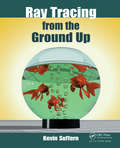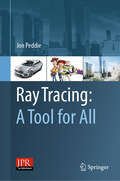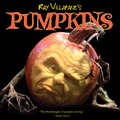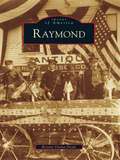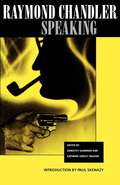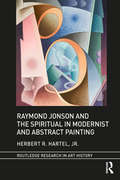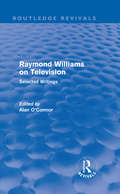- Table View
- List View
Rapid Story Development: How to Use the Enneagram-Story Connection to Become a Master Storyteller
by Jeff LyonsThis book offers a unique approach to storytelling, connecting the Enneagram system with classic story principles of character development, plot, and story structure to provide a seven-step methodology to achieve rapid story development. Using the nine core personality styles underlying all human thought, feeling, and action, it provides the tools needed to understand and leverage the Enneagram-Story Connection for writing success.Author Jeff Lyons starts with the basics of the Enneagram system and builds with how to discover and design the critical story structure components of any story, featuring supporting examples of the Enneagram-Story Connection in practice across film, literature and TV. Readers will learn the fundamentals of the Enneagram system and how to utilize it to create multidimensional characters, master premise line development, maintain narrative drive, and create antagonists that are perfectly designed to challenge your protagonist in a way that goes beyond surface action to reveal the dramatic core of any story.Lyons explores the use of the Enneagram as a tool not only for character development, but for story development itself. This is the ideal text for intermediate and advanced level screenwriting and creative writing students, as well as professional screenwriters and novelists looking to get more from their writing process and story structure.
Raptors: Portraits of Birds of Prey
by Traer ScottThis delightful and dramatic collection of portraits reveals birds of prey as we never experience them: intimate and up close, photographed in Traer Scott's signature style. Seventy spectacular color photos present twenty-five different species, from the familiar to the exotic and endangered: hawks, owls, falcons, a bald eagle, kestrels, a Mississippi Kite, a turkey vulture, and more. Joining their elders are a fluffy baby vulture and adorable baby and juvenile great horned owls. The birds in this remarkable collection emerge as personalities, not just types: wise and quizzical, graceful and enigmatic, serene and fiercely self-possessed. A personal introduction describes Scott's process and connection to the birds, and captions detail the characteristics and habits of these incredible winged creatures.
Rare Coin Investing: An Affordable Way to Build Your Portfolio
by David L. GanzInvest in Affordable Rare Coins Want to broaden your retirement portfolio beyond stocks and bonds? Studies show that the same amount of money invested in the stock market and in rare coins can result in a better return by investing in rare coins. Consider adding rare coins to your investment portfolio. But don't think you have to spend thousands of dollars on a one-of-a-kind coin to see a portfolio return on your investment. For as little as $100 a coin, you can start building a portfolio that can bring solid gains. Learn how great coin collections were built with low-cost coins. See how a portfolio of coins gained in value over 10 years, 20 years, 30 years and more. Study the author's recommendations for affordable coins you can buy now.
Rare Light: J. Alden Weir in Windham, Connecticut, 1882-1919 (Garnet Bks.)
by Anne E. DawsonRare Light is a collection of essays exploring little known facets of the life and career of a major American Impressionist painter. J. Alden Weir (1852–1919) painted some of his finest canvases while living in Windham in eastern Connecticut’s picturesque “Quiet Corner,” and this rural location played a crucial role in Weir’s artistic development. The four essays that comprise this book offer in-depth contextual information about the architecture, culture, environment, and history of the region, allowing us to see Connecticut as it appeared in Weir’s lifetime. Interweaving photos, paintings, and letters—some never before published—Rare Light documents the artist’s sense of Windham as a place for social gatherings, physical and psychic rest, and art making. Taken together, the essays celebrate the interconnectedness of art, architecture, family, history, and place. Includes essays by Charles Burlingham Jr. , Rachel Carley, Anne E. Dawson, and Jamie Eves.
Rare Trees: The Fascinating Stories of the World's Most Threatened Species
by Sara Oldfield Malin RiversDiscover the secrets and beauty of the world&’s rarest trees in this fantastic book filled with more than 300 color photographs. Forests cover nearly a third of the world's surface, and the trees that make them up include a staggering diversity of more than 60,000 species. Individual trees play specific ecological roles in their unique environments—and they have adapted to thrive on steep mountains, in cloud forests, on dry savannahs, in parched deserts, and in tropical wetlands. Our history, and our future, are interwoven with the trees that define the regions of our green planet. Rare Trees profiles over 60 unique species that are currently endangered—including the most charismatic, fascinating, and downright bizarre examples from all around the globe. Filled with hundreds of color photographs, maps to help readers identify habitats, and accessible and engaging text by tree experts from the Global Trees Campaign, Rare Trees will give readers a new appreciation for the importance of trees and will inspire them to preserve this critical canopy of life.
Rarities of These Lands: Art, Trade, and Diplomacy in the Dutch Republic
by Claudia SwanA vivid account of the exoticism of the Dutch Republic at a critical moment in its cultural and political historyThe seventeenth century witnessed a great flourishing of Dutch trade and culture. Over the course of the first half of the century, the northern Netherlands secured independence from the Spanish crown, and the nascent republic sought to establish its might in global trade, often by way of diplomatic relations with the Ottoman Empire and other Muslim powers. Central to the political and cultural identity of the Dutch Republic were curious foreign goods the Dutch called "rarities."Rarities of These Lands explores how these rarities were obtained, exchanged, stolen, valued, and collected, tracing their global trajectories and considering their role within the politics of the new state. Claudia Swan’s insightful, engaging analysis offers a novel and compelling account of how the Dutch Republic turned foreign objects into expressions of its national self-conception.Rarities of These Lands illuminates the formative years of the Dutch Republic, offering a timely examination of the art, politics, and exoticism of this momentous period in the history of the Netherlands.
Rashomon Effects: Kurosawa, Rashomon and their legacies (Routledge Advances in Film Studies)
by Robert Anderson Blair Davis Jan WallsAkira Kurosawa is widely known as the director who opened up Japanese film to Western audiences, and following his death in 1998, a process of reflection has begun about his life’s work as a whole and its legacy to cinema. Kurosawa’s 1950 film Rashomon has become one of the best-known Japanese films ever made, and continues to be discussed and imitated more than 60 years after its first screening. This book examines the cultural and aesthetic impacts of Akira Kurosawa’s Rashomon, as well as the director’s larger legacies to cinema, its global audiences and beyond. It demonstrates that these legacies are manifold: not only cinematic and artistic, but also cultural and cognitive. The book moves from an examination of one filmmaker and his immediate social context in Japan, and goes on to explore how an artist’s ideas might transcend their cultural origins to ultimately provide global influences. Discussing how Rashomon’s effects began to multiply with the film being re-imagined and repurposed in numerous media forms in the decades that followed its initial release, the book also shows that the film and its ideas have been applied to a wider range of social and cultural phenomena in a variety of institutional contexts. It addresses issues beyond the realm of Rashomon within film studies, extending to the Rashomon effect, which itself has become a widely recognized English term referring to the significantly different interpretations of different eyewitnesses to the same dramatic event. As the first book on Rashomon since Donald Richie's 1987 anthology, it will be invaluable to students and scholars of film studies, film history, Japanese cinema and communication studies. It will also resonate more broadly with those interested in Japanese culture and society, anthropology and philosophy.
Raspberry Pi GPU Audio Video Programming
by Jan NewmarchDelve into the Broadcom VideoCore GPU used on the Raspberry Pi and master topics such as OpenGL ES and OpenMAX. Along the way, you'll also learn some Dispmanx, OpenVG, and GPGPU programming. The author, Jan Newmarch bumped into a need to do this kind of programming while trying to turn the RPi into a karaoke machine: with the CPU busting its gut rendering MIDI files, there was nothing left for showing images such as karaoke lyrics except for the GPU, and nothing really to tell him how to do it. Raspberry Pi GPU Audio Video Programming scratches his itch and since he had to learn a lot about RPi GPU programming, he might as well share it with you. What started as a side issue turned into a full-blown project of its own; and this stuff is hard. What You'll Learn Use Dispmanx and EGL on Raspberry Pi Work with OpenMAX and its components, state, IL Client Library, * * Buffers, and more on RPi Process images and video on RPi Handle audio on RPi Render OpenMAX to OpenGL on the RPi Play multimedia files on the RPi Use OpenVG for text processing and more Master overlays Who This Book Is For You should be comfortable with C programming and at least some concurrency and thread programming using it. This book is for experienced programmers who are new or learning about Raspberry Pi.
Rated A: Soft-Porn Cinema and Mediations of Desire in India (Feminist Media Histories #8)
by Darshana Sreedhar MiniA free ebook version of this title is available through Luminos, University of California Press's Open Access publishing program. Visit www.luminosoa.org to learn more. In the 1990s, India's mediascape saw the efflorescence of edgy soft-porn films in the Malayalam-speaking state of Kerala. In Rated A, Darshana Sreedhar Mini examines the local and transnational influences that shaped Malayalam soft-porn cinema—such as vernacular pulp fiction, illustrated erotic tales, and American exploitation cinema—and maps the genre's circulation among blue-collar workers of the Indian diaspora in the Middle East, where pirated versions circulate alongside low-budget Bangladeshi films and Pakistani mujra dance films as South Asian pornography. Through a mix of archival and ethnographic research, Mini also explores the soft-porn industry's utilization of gendered labor and trust-based arrangements, as well as how actresses and production personnel who are marked by their involvement with a taboo form negotiate their social lives. By locating the tense negotiations between sexuality, import policy, and censorship in contemporary India, this study offers a model for understanding film genres outside of screen space, emphasizing that they constitute not just industrial formations but entire fields of social relations and gendered imaginaries.
Rationalist Empiricism: A Theory of Speculative Critique (Idiom: Inventing Writing Theory)
by Nathan BrownTwenty-first-century philosophy has been drawn into a false opposition between speculation and critique. Nathan Brown shows that the key to overcoming this antinomy is a re-engagement with the relation between rationalism and empiricism. If Kant’s transcendental philosophy attempted to displace the opposing priorities of those orientations, any speculative critique of Kant will have to re-open and consider anew the conflict and complementarity of reason and experience. Rationalist Empiricism shows that the capacity of reason and experience to extend and yet delimit each other has always been at the core of philosophy and science. Coordinating their discrepant powers, Brown argues, is what enables speculation to move forward in concert with critique.Sweeping across ancient, modern, and contemporary philosophy, as well as political theory, science, and art, Brown engages with such major thinkers as Plato, Descartes, Hume, Hegel, Marx, Heidegger, Bachelard, Althusser, Badiou, and Meillassoux. He also shows how the concepts he develops illuminate recent projects in the science of measurement and experimental digital photography. With conceptual originality and argumentative precision, Rationalist Empiricism reconfigures the history and the future of philosophy, politics, and aesthetics.
Rationality and the Environment: Decision-making in Environmental Politics and Assessment
by Bo EllingEnvironmental assessment and management involve the production of scientific knowledge and its use in decision-making processes. The result is that within these essentially rational, political assessment frameworks, experts are creating and applying scientific knowledge for decision and management purposes that actually have strong ethical and aesthetic dimensions. Yet these rational political frameworks lack the tools to provide guidance on ethical and aesthetic issues that affect the wider public. This revolutionary work argues that ethical and aesthetic dimensions can only be brought into environmental politics and policies by citizens actively taking a stand on the specific matters in question. The author draws on Habermas? trisection of rationality as cognitive-instrumental, moral-practical and aesthetic-expressive, to suggest that truly effective environmental policy needs to activate all three approaches and not favour only the rational. To achieve this objective, the author argues that public participation in environmental policy and assessment is necessary to counteract the dictatorship of technical and economic instrumentality in environmental policy - the failure to take ethical and aesthetic rationalities into account - and, more importantly, how such policy is applied on the ground to shape our natural and material world.
Raul Ruiz's Cinema of Inquiry
by Andreea Marinescu Ignacio Lopez-VicunaMost widely known for his filmic productions, Raúl Ruiz (1941–2011) was a highly prolific, erudite, and innovative artist, whose work is located at the intersection of diverse locations, languages, and aesthetic traditions. Ruiz’s eclectic body of work includes over one hundred films (among them features, shorts, television serials, and videos), books on the theory of cinema, genre-defying fiction books, plays, a radio show, and a multimedia installation. Raúl Ruiz’s Cinema of Inquiry posits the unity of Ruiz’s body of work and investigates the similarities between his very diverse artistic productions. Ruiz’s own concept of “cinema of inquiry” provides the lens through which his films and poetics are examined. Ruiz’s relevance to cinema and the growing interest in his work are due to his legacy as a global filmmaker. Viewers, filmmakers, and film scholars continue to return to his works because his films consistently pose the question of what cinema can be, especially at a time when cinema is increasingly seen as displaced by television and new media. Ruiz expanded the domain of cinema itself, incessantly probing the interstices between cinema and other arts. Editors Ignacio López-Vicuña and Andreea Marinescu, with six other scholars, explore different aspects of Ruiz’s work, with special attention paid to the transnational aspects of Ruiz’s films, critical regionalism, and political and aesthetic interventions. Raúl Ruiz’s Cinema of Inquiry includes close readings of important yet understudied films, as well as two extensive previously unpublished interviews with Ruiz. This comprehensive volume gives voice to a significant filmmaker and artist. Students and scholars of film and media studies will find great value in this collection.
Raumbegriff und Raumordnung: Schnelleinstieg für Architekten und Bauingenieure (essentials)
by Mario H. KrausRaum ist ein mehrdeutiger und gelegentlich umstrittener Begriff. Raumordnung beruht auf einem empfindlichen und veränderlichen gesellschaftlichen Gleichgewicht, das sich in den Rechtsgrundlagen und der alltäglichen Umsetzung widerspiegelt. In diesem essential werden Ansätze aus der Phänomenologie zur Einordnung der verschiedenen Raumbegriffe genutzt.
Ravilious & Co.: The Pattern Of Friendship
by Andy Friend Alan PowersA dynamic tale of art and friendship, set between the World Wars, against the backdrop of a rapidly changing world Eric Ravilious is one of the best-known twentieth-century English artists. For many, his watercolors capture the spirit of midcentury England. But while he had a style of his own, he did not work in isolation; he worked within a network of artists that included fellow students at the Royal College of Art such as Edward Bawden, Barnett Freedman, Enid Marx, Percy Horton, Peggy Angus, and Helen Binyon. The story of this beloved artist is also a biography of the group of fellow creators with whom he associated—men and women who inspired, challenged, and influenced one another—from their student days up through the Second World War. Drawing on extensive research, Andy Friend considers the predecessors in the English watercolor and wood-engraving tradition that influenced the group’s art and demonstrates the significance of women artists, whose place within this interwar-era network has often been neglected. Published to coincide with the seventy-fifth anniversary of Ravilious’s death, Ravilious & Co. accompanies an exhibition of the same name, touring throughout England in 2017.
Ravished Armenia and the Story of Aurora Mardiganian
by Anthony Slide"Ravished Armenia" and the Story of Aurora Mardiganian is the real-life tale of a teenage Armenian girl who was caught up in the 1915 Armenian genocide, the first genocide in modern history. Mardiganian (1901-1994) witnessed the murder of her family and the suffering of her people at the hands of the Ottoman Empire. Forced to march over fourteen hundred miles, she was sold into slavery. When she escaped to the United States, Mardiganian was then exploited by the very individuals whom she believed might help. Her story was published in book form and then used as the basis for a 1918 feature film, in which she herself starred. The film Ravished Armenia, also known as Auction of Souls, is a graphic retelling of Aurora Mardiganian's story, with the teenager in the central role, supported by Anna Q. Nilsson and Irving Cummings and directed by Oscar Apfel. Only twenty minutes of the film--the first to deal with the Armenian genocide--is known to survive, but it proves to be a stunning production, presenting its story in newsreel style. This revised edition of Anthony Slide's "Ravished Armenia" and the Story of Aurora Mardiganian also contains an annotated reprint of Mardiganian's original narrative and, for the first time, the full screenplay. In his introduction, Slide recounts the making of the film and Mardiganian's life in the United States, involving a cast of characters including Henry Morgenthau, Mrs. George W. Vanderbilt, Mrs. Oliver Harriman, and film pioneer William Selig. The introduction also includes original comments by Aurora Mardiganian, whom Slide interviewed before her death. Acclaimed Armenian Canadian filmmaker Atom Egoyan, who created a video art installation about Mardiganian in 2007, provides a foreword.
Raw
by Pamela Anderson Emma Dunlavey Raphael MazzuccoSensuality uninhibited. Behind the scenes look at one of Rock &‘n' Roll's favorite women. Captured by Emma Dunlavey. Over a decade's worth of fly-on-the-wall style reportage. Fun, sexy handwritten prose by Pamela expressing herself freely within the images. Sexy and funny, Raw reveals Pamela Anderson at her most intimate. Featuring over a decade of Emma Dunlavey's behind-the-scenes photography, Raw shows Pamela at her wildest, her silliest, and her sexiest. Raw lets the reader be a fly on the wall, witnessing Pamela's adventures around the world. Combined with Pamela's prose and poetry, hand-written and hand-arranged by Pamela, Raw is a beautiful entrée into the life one the world's most exciting and sensual women. A journey worth taking. Proceeds from every print-edition purchase go to the Pamela Anderson Foundation, which supports organizations and individuals that stand on the front lines in the protection of human, animal, and environmental rights.
Raw Art Journaling
by Quinn McdonaldMeaning in life is made, not found. In a raw-art journal, you don’t need to know how to draw; you don’t need to know how to write well. You don’t need worry about messing up techniques you’ve never attempted before inside your raw-art journal. You just need to be you because raw art isyouand it thrives on creative play, on experimentation and even on making mistakes. Raw Art Journalingwill teach you how to embrace your art, confront negative self-talk (a. k. a. , your gremlin) and make meaning with your words and with your art. InsideRaw Art Journalingyou’ll discover how to: Write meaningful thoughts with a single sentence Create thought-provoking poems through found poetry Uncover images hidden in your photos Make personal meaning with the simplest of lines Finally feel free to make mistakes Use clever techniques to keep your secrets secret Quiet your gremlin, grab your permission slip (it’s on page 19) and start making meaning in your own raw-art journal today! Inspiration awaits at CreateMixedMedia. com Look. Make. Meet.
Raw: Architectural Engagements With Nature
by Solveig Bøe Hege Charlotte FaberThrough cross-disciplinary explorations of and engagements with nature as a forming part of architecture, this volume sheds light on the concepts of both nature and architecture. Nature is examined in a raw intermediary state, where it is noticeable as nature, despite, but at the same time through, man’s effort at creating form. This is done by approaching nature from the perspective of architecture, understood, not only as concrete buildings, but as a fundamental human way both of being in, and relating to, the world. Man finds and forms places where life may take place. Consequently, architecture may be understood as ranging from the simple mark on the ground and primitive enclosure, to the contemporary megalopolis. Nature inheres in many aesthetic forms of expression. In architecture, however, nature emerges with a particular power and clarity, which makes architecture a raw kind of art. Even though other forms of art, as well as aesthetic phenomena outside the arts, are addressed, the analogy to architecture will be evident and important. Thus, by using the concept of ’raw’ as a focal point, this book provides new approaches to architecture in a broad sense, as well as other aesthetic and artistic practices, and will be of interest to readers from different fields of the arts and humanities, spanning from philosophy and theology to history of art, architecture and music.
Ray Tracing from the Ground Up
by Kevin SuffernWith the increase in computing speed and due to the high quality of the optical effects it achieves, ray tracing is becoming a popular choice for interactive and animated rendering. This book takes readers through the whole process of building a modern ray tracer from scratch in C++. All concepts and processes are explained in detail with the aid o
Ray Tracing: A Tool for All
by Jon PeddieThis is the first book to offer a comprehensive overview for anyone wanting to understand the benefits and opportunities of ray tracing, as well as some of the challenges, without having to learn how to program or be an optics scientist.It demystifies ray tracing and brings forward the need and benefit of using ray tracing throughout the development of a film, product, or building — from pitch to prototype to marketing.Ray Tracing and Rendering clarifies the difference between conventional faked rendering and physically correct, photo-realistic ray traced rendering, and explains how programmer’s time, and backend compositing time are saved while producing more accurate representations with 3D models that move.Often considered an esoteric subject the author takes ray tracing out of the confines of the programmer’s lair and shows how all levels of users from concept to construction and sales can benefit without being forced to be a practitioner. It treats both theoretical and practical aspects of the subject as well as giving insights into all the major ray tracing programs and how many of them came about.It will enrich the readers’ understanding of what a difference an accurate high-fidelity image can make to the viewer — our eyes are incredibly sensitive to flaws and distortions and we quickly disregard things that look phony or unreal. Such dismissal by a potential user or customer can spell disaster for a supplier, producer, or developer. If it looks real it will sell, even if it is a fantasy animation. Ray tracing is now within reach of every producer and marketeer, and at prices one can afford, and with production times that meet the demands of today’s fast world.
Ray Villafane's Pumpkins
by Ray VillafaneSome of the most ghoulish creations from &“the Picasso of pumpkin carving&”—as seen on Bored Panda, the Food Network, and The Martha Stewart Show (The Wall Street Journal). Ray Villafane&’s 3-D pumpkin carvings have taken the world by storm—and have set a high bar for Halloween. From his teaching days creating custom pumpkins for his students to carving for the president at the White House, Ray has used his style, talent, and creativity to raise pumpkin &“carving&” to an art. As you admire the pumpkins within these pages, you&’ll be inspired to pick up your own tools and follow Ray&’s advice and tips on creating one-of-a-kind Halloween decorations. Sculpted into haunting humans, fantastical fish, and menacing monsters, Ray&’s pumpkin transformations will put a grin on your face—and give you a new appreciation for the seasonal squash. &“The Michelangelo of pumpkin carving.&”—Martha Stewart &“The world&’s foremost pumpkin carver.&”—USA Today &“Ray Villafane takes pumpkin carving to another level.&”—The Telegraph &“Terrifyingly cool pumpkin carvings.&”—Bored Panda
Raymond (Images of America)
by Kristin Ozana DoyleThe winding Lamprey River snakes its way through many areas of Raymond and has played a dual role in the town's history, helping in times of fire and hindering in times of flood. Raymond began as a small farming village and grew over the years into abustling resort community. The town was a busy stop on the Boston and Maine Railroad line, and its accessibility aided the town in its expansion. Raymond has since evolved into a modern town witha strong sense of historical perspective. The vintage images in this book, culled from the collections of the Raymond Historical Society and numerous local residents, document the history of this constantly changing community.
Raymond Chandler Speaking
by Raymond ChandlerTough-minded and typically idiosyncratic, here is Chandler on Chandler, the mystery novel, writing, Hollywood, TV, publishing, cats, and famous crimes. This skillfully edited selection of letters, articles, and notes also includes the short story "A Couple of Writers" and the first chapters of Chandler's last Philip Marlowe novel, The Poodle Springs Story, left unfinished at his death. Paul Skenazy has provided a new introduction for this edition as well as a new selected bibliography.
Raymond Jonson and the Spiritual in Modernist and Abstract Painting (Routledge Research in Art History)
by Herbert R. Hartel, Jr.This is the most thorough and detailed monograph on the artwork of Raymond Jonson. He is one of many artists of the first half of the twentieth-century who demonstrate the richness and diversity of an under-appreciated period in the history of American art. Visualizing the spiritual was one of the fundamental goals of early abstract painting in the years before and during World War I. Artists turned to alternative spirituality, the occult, and mysticism, believing that the pure use of line, shape, color, light and texture could convey spiritual insight. Jonson was steadfastly dedicated to this goal for most of his career and he always believed that modernist and abstract styles were the most effective and compelling means of achieving it.
Raymond Williams on Television: Selected Writings (Routledge Revivals)
by Raymond WilliamsFirst Published in 1989, this work is based around a monthly TV column which Raymond Williams wrote for The Listener between 1968 and 1972. Those were the years of the Prague Spring, of anti-Vietnam war demonstrations, of fighting in Cambodia and Northern Ireland, of hope for McGovern in the United States and attacks on the Wilson Labour Government in Britain. In The Listener articles Williams comments on all of these events, providing a rare glimpse not only into the events of his daily life but also into the continuing development of a personal sociology of culture. The articles also discuss such television forms as detective series, science programmes and sports, travelogue, education, gardening, and children’s programming. The book also includes Williams’ key lecture "Drama in a Dramatised Society", which sets a framework for his analysis; a London Review of Books piece on the Falklands/Malvinas adventure as a "tele-war"; and an interview with Williams on television and teaching. Cited by The Guardian as "The foremost political thinker of his generation", Williams’ writing amounts to a primer on ways of watching television and of critiquing its profound social and political impact.
